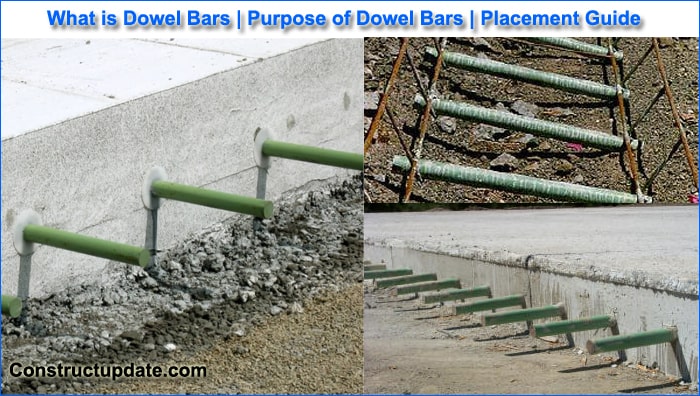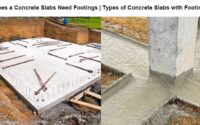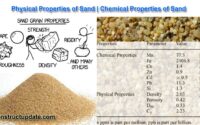What is Dowel Bar | Purpose of the Dowel Bar
Dowel bars are a fantastic and crucial component for building roads, and they provide a tonne of advantages, did you know that? Don’t worry; we are here to provide you with all the information you require about them. So let’s start with the fundamentals.
What is Dowel Bar?
Dowel Bars are small, round, smooth steel bars that provide a mechanical connection between slabs without limiting the movement of the horizontal joint. These bars are typically utilised in the jointed plain concrete pavement to support the additional load and stress brought on by moving vehicles. They are positioned at the concrete pavement’s transverse joints and help with the partial transmission of wheel loads from one slab to the next.
The dowel bars also allow for the concrete slab’s axial thermal expansion and contraction along the dowel axis. Half of the length of this bar is implanted in one of the concrete slabs, while the other half is bonded to the other slab next to it. When the slab contracts and expands due to a change in temperature, one end of the bar is left free for movement.
Dowel bars, or round steel, are used to provide easy load transfer across concrete joints and are installed across the horizontal joints of structural concrete members. Additionally, they allow the movement to happen. When movements are specifically created for longitudinal joints, it is acceptable.

Purpose of the Dowel bar
Dowel bars have numerous uses.
- For the purpose of transferring load across the concrete joints, dowel bars are available.
- They’re employed to lessen corner cracking.
- Additionally, dowel bars are offered to lessen joint faulting.
- Dowel bars are used to enhance the functionality of the joints.
- They are available for transferring loads from one member to the one next to it, such as from one slab to the one closest.
The size of the dowel bars varies depending on how thick the pavement is. The dowel bars are often positioned 12 inches (305mm) apart, 1.25 to 1.5 inches (32 to 38 mm) in diameter, and 18 inches (460mm) long. Dowel bars are coated with either epoxy or stainless steel to prevent corrosion and keep the bars from rusting.
Placement of the Dowel Bars
Dowel bars must be positioned parallel to the centerline.
To ensure that there is at least one-half of a dowel on each side of the joint or crack, new channels must be carved.
Dowel bars are positioned across the transverse joints of concrete paving to allow for mobility. They are placed in the slab’s intermediate depth and covered in a bond-breaking substance to prevent bonding to the PCC. These dowels assist in transferring weights, allowing nearby slabs to expand and contract on their own.
Size of Dowel Bars
Depending on the thickness of the pavement, dowel bars are normally 18 inches long, 1.25 to 1.5 inches in diameter, and placed 12 inches apart. To avoid rust, the dowel bars are either stainless steel or epoxy coated.
Advantages of using Dowel Bars
- Dowel bars are used to reduce tension and deflection.
- These bars strengthen the slabs, allowing them to support the additional weight.
- Additionally, these bars increase the initial pavement durability.
- Joint flexibility improvements between structural elements.
- It lowers life cycle costs while raising the project’s original cost.
Disadvantages of using Dowel Bars
- Issues develop during installation.
- Concrete that is uneven and not tightly packed surrounds the dowel bars.





